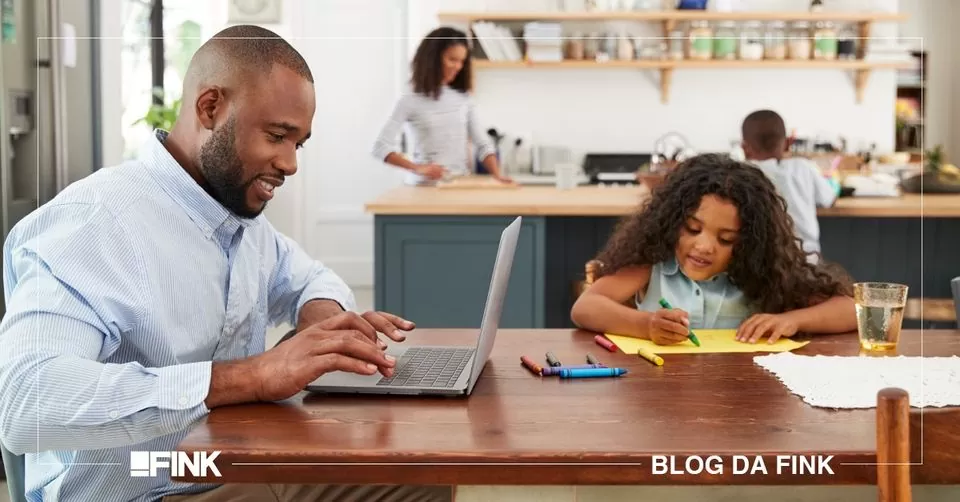
One of the main challenges imposed by the quarantine, looking after children during remote worktime, demands patience and attention.
Since the beginning of the new coronavirus pandemic, one of the most popular expressions in use worldwide is the “new normal”, a kind of new routine that ensures our survival in every sense. Way beyond the preventive measures that avoid contagion, come the measures that care for our mental health and the new forms of personal and professional behavior. But those who have children at home know very well that these changes have been happening since at least the second half of March, when the World Health Organization imposed social distancing and 46% of Brazilian companies – according to research by the Fundação Instituto de Administração (FIA) (Foundation Institute of Administration) – adopted the home office system in Brazil, and all the schools stopped their activities.
In this new routine, parents and children began to totally share the house. And at the same time that this may seem great for allowing them more time together, it’s also very challenging. And, of course, it fell to the adults to conciliate the domestic ambiance with the functions of an office and the children’s virtual classes. All of this, together with the sad impossibility of going to one’s favorite leisure places, no matter one’s age. If adults are able to absorb more changes and are more resilient – especially since they have to keep control of the situation when they have children – the same ability cannot be expected of children. Just remember how often you were interrupted in a virtual meeting by a child speaking, and also how you had to deal with the children’s frustration at not having school or being with their friends.
And to deal with the anxiety caused by the uncertainty of when all of this is going to end, it’s up to the parents to learn how to deal with the situation in the best possible way, for their own mental health as well as for the children’s welfare. The first step in that direction is to establish and follow a routine that covers everything: work, study, meals, sleep and leisure. The routine is responsible for “giving orders” to the brain, which begins to work better, with foreseen and organized actions. To that end, it is important to follow the schedule for each activity, with no interruptions, facilitating the capacity for concentration and reducing the anxiety for the next moment.
The second tip is to physically separate the work ambiance from the leisure and study ambiances. Parents need a work station to maintain concentration and organization, without children’s noises, such as TV, videogames, smartphones, tablets, and computers. Likewise, during their virtual class, children need the maximum possible attention to maintain their concentration on what is said and proposed by their teachers. Parents and children must respect these spaces during the established timetable. Of course, pauses may be taken during worktime to help their children when absolutely necessary, but not for avoidable distractions.
Last, and most important, comes communication with one’s children. Differently from the former tips, which are practical, this step is completely subjective, and demands assertive speech for the children’s education, and an attentive ear to understand their wishes. Depending on the child’s age, it is worthwhile to be very didactic, showing the divisions in schedule in a playful way, to show how the schedules work. To that end, the routine and the geographic separation of work station, leisure, and study areas are great allies. It’s easier, for instance, to show that after breakfast and before lunch, the parents are working – as well as after lunch and before dinner. Likewise, illustrate the study hours established by the school divided between meals. Other ways of illustrating schedules so that children perceive a notion of time, is observing daytime and night (light and dark), for example.
But it is worthwhile to highlight the fact that what is most important is the commitment established, be it in the routine, the separation of ambiances, or in the communicaton with the child. If you have promised that the child can play after class, for instance, keep your promise. And, of course, try to make the most of the chance for accompanying their growth so closely. No matter how challenging, there’s also a lot to be gained from this distancing routine. We’ll all remember the quarantine, so why not build the best possible memories from all these challenges?











